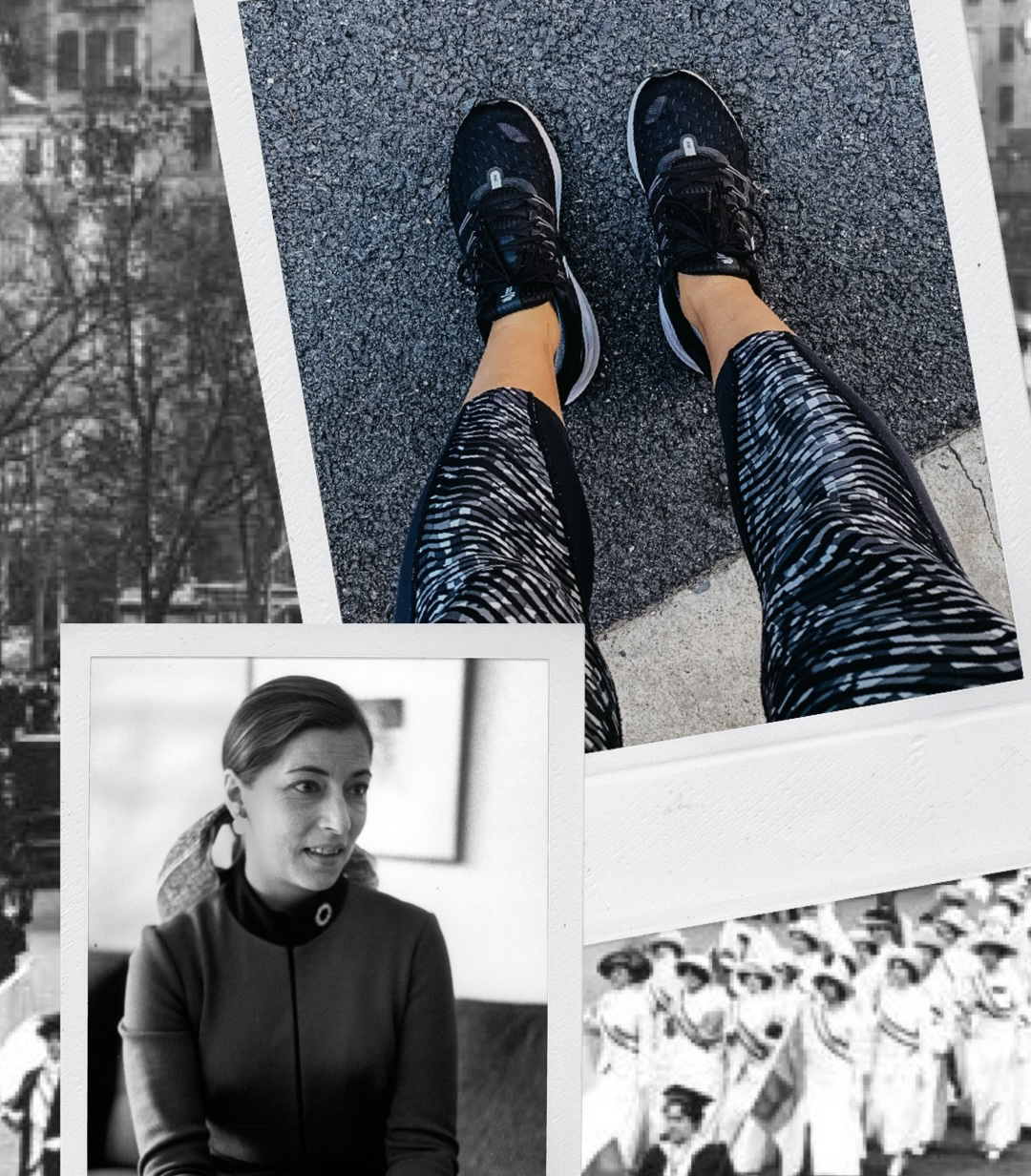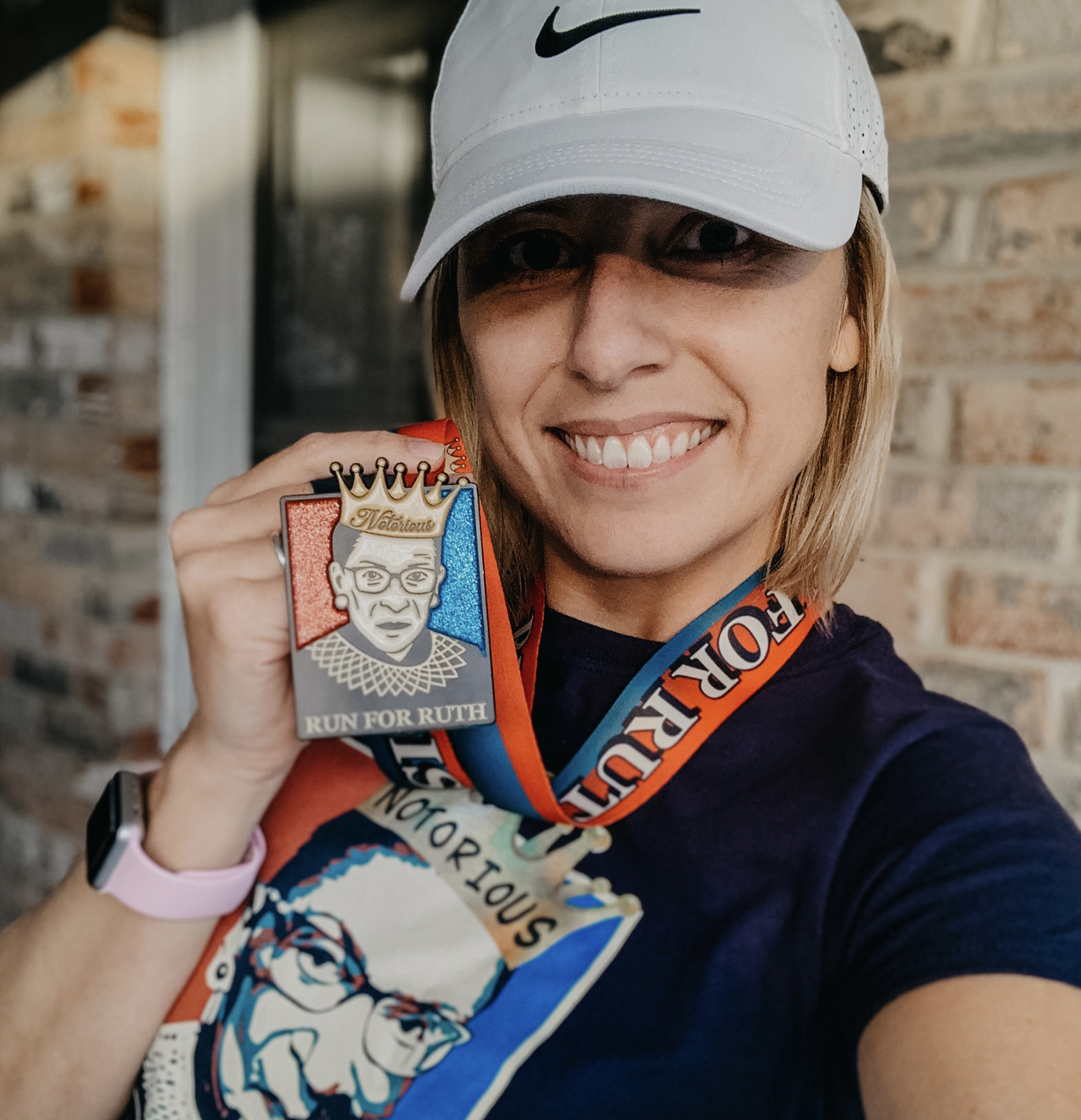On January 21st, 2017, the morning after the inauguration of our 45th president, I exited the L’Enfant Plaza Metro tunnel with my 14-month old daughter and made my way toward the Hirschhorn Museum in Washington, D.C.
Dylan’s pink fleece must have signaled our support for the Women’s March, as we were promptly heckled by a white woman in the back of an Uber car:
“Oh yeah, bring your baby to The March. REAL SMART!”
Women’s March, January 2017

It isn’t just that I don’t like being picked on (of course I don’t). Or that I have some primal rage set off by external threats wielded in the vicinity of my baby (also true). The moment was also memorable for the awakening it triggered in me, regarding American women in my demographic.
It started with her.
The baby I was carrying was my second child, to be clear, which means I’d been wearing Baby B’jorns and pushing strollers around in public for three years already.
Had I been newer at babies, I might have not have known the difference. (Everyone was an asshole before I had babies.) Had I been in a seedier neighborhood, I might have expected it. But the strangers I generally encountered with my kids coo’d at them and smiled over me as their mother. They wanted good things for us.
This stranger? A white woman just like me, making crystal clear her disapproval of where I should and shouldn’t go with my own baby.
At a girl-power rally.
The irony.
In a positive spin, this gal’s rogue mouth turned out to be the singular threat to our pride that day. Despite the failed attempt to carry out plans I’d made to meet up with co-workers, it was a cup-full experience on the whole.
Women and men of every skin and hair color cleared paths for us to get to less populated areas. Crafty grandmothers handed off knitted trinkets for my girl as we passed through. These people treated us with nothing but support, the Uber-jockey from the morning only helping me appreciate them more.
The events of that day would restore just enough hope to carry me through the #NotMyMarch hashtags and snarky memes which would circulate the internet thereafter. An old girlfriend texted me the following week: “I just CAN’T. Why??” Click-bait opinions began popping up with “THIS!” captions, and titles like, “Five Reasons I’m a Woman Who Hates Feminists.”
I would be mind-blown for the third and final time in that election cycle as it reigned official: This was not a fluke. This was exactly who we were.
A century-long fight by Suffragettes had culminated here, 96 years later. “Locker room talk” and p*ssy-grabbing were perfectly worthy of women’s votes in a land where I was now raising a daughter. We were freer than ever to have a say, and this is what we were choosing say.
*Insert side-eye and enthusiastic thumbs-up.
For each of the months to follow, the screens would shock and awe relentlessly: children crying alone at the southern border, ACLU lawyers scrambling to represent crowds of Dreamers held up in airports. Executive order after executive order tossing out policies worked on by progressive activists and lawmakers for years.
Eventually, I had no choice but to stop looking and worry about my own family.
The only thing making this hard, afterall, was my faulty empathy for those actually harmed by America’s veiled intolerance. That generally wasn’t me.
I was a well-insulated white girl with a salary, a husband and a house. Two reliable cars, health insurance, a couple kids in private school…I was doing okay. All I really had to do to live better was close my eyes and stop worrying about the ones suffering…
…so I did.
For most of the days of the Trump administration, I separated empathy from facts and lived my life. I went to work at my Labor Union. I made websites and posters for people who were losing their American jobs to exploited workers in Mexico. I attended Capitol Hill rallies for pensioners, teachers, government workers and minorities. Then, I went home and lived as if I’d seen none of it.
In summary and hindsight: my solution for thriving in a Trump presidency was to stop caring about other people and only care about myself.
I literally had to become a different person.
With all of this said, it isn’t like I haven’t wondered how to string words together for my feminism at varying flash points. When issues resurface every now and again and trigger what lies beneath, I make notes and pull up a word document and I try – I really try. There is just too much to say.
I start thinking about the predictable responses of every opposing opinion I’ve ever read, the talking points of the left and right that are unending and truly exhausting. I think about how motherhood altered my vision on this topic, and how much I changed as I transitioned back into the workforce with a breast pump in tow.
I decide every time that this task demands too much, and give up because I have kids and a full-time job.
The funny thing is, I think most women who give a damn while living in a place of comfort can probably relate. We know better, but to engage is too much.
Too much time, too much emotion, too much questioning ourselves, too much people-thinking-things-about-us and too much “stirring the pot.” Even if we were brave enough to “go there,” I have found the majority of people in most rooms aren’t interested in the discomfort these conversations bring.
And so it goes that we are more accepted with our heads in the sand. We leave them there for the sake of our kids and husbands and colleagues. We leave them there, because discussing cause and effect at this scale involves too many emotions in a world where we are constantly moving and feeling things.
We tuck away our deep thinking, only to dust it off with each election and feel everything at once as we discover who supports who and judge them for it. We pull it out only after we are shocked by the results – as we try to figure out who, exactly, we are surrounded by.
Only then, does our desire to discuss policy boil over onto fellow “suburban women” who look like us. This is the moment we decide to organize and march in dissent. This is the moment we feel brave enough to cast our opinions over mothers walking in the city with pretty babies in pink fleeces.
This moment. After it’s too late and we are too mad.
What is #RunforRuth?

When I decided to register for the #RunforRuth virtual race in October, I’d just completed a ten-mile personal challenge to pull myself out of a COVID-induced summer funk. I was fired up in my politics and in need of a new fitness goal, when an ad popped up in my Facebook feed with a tee shirt and medal I just had to have. I clicked through, considered the timeline of an 87-mile target honoring the late Supreme Court Justice, and signed up.
The rest of the plan fell together as I went along, really. I scheduled runs for three days a week, incrementally logging years-of-life miles toward the 87 that Ruth Bader Ginsburg lived. My goal was to finish up by Thanksgiving.
With each workout, I would research a case she argued, a dissent, or a value she lived by. I would consider the things I read as I ran the miles, and record the journey in my Instagram stories for accountability.
The process was transformative – for my running as well as my feminism. It took six weeks and left me with thoughts I finally felt ready to articulate. I intend to do that with this post and the next: What I learned from Ginsburg and my own body on this journey.
I hope you can gain something from this enlightenment, regardless of your political leaning. Afterall, the progress Ruth secured for American women was never based in liberalism, much as the logos and monikers of today’s feminists assume that. It was always based in justice: A day that women and men could more freely defy stereotypes, with fewer gender-based obstructions hiding within our laws.
At the end of the day, Ruth made this land equally more livable for the woman who walks on the sidewalk with a baby in my story, and the one who heckles from her Uber car. Regardless of our deepest divisions, every one of our lives are constitutionally freer because of the way that she lived hers. ➕

